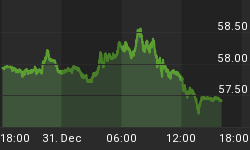February 2010
Long Term Interest Rates To Double By 2020
We believe 10-Year U.S. Treasuries Government Yield is going to double over the next decade to eventually reach 10% by 2020. This prediction seems quite nonsensical as interest rates are hovering at their lowest level but secular financial environment changes occur most of the time when market participants are expecting it the least... And this might just be the case with long term interest rates!
This forecast is based on our demographic model seen below. When the red line increases, the proportion of "retirees" rises faster than "high savers" causing government debt to expand due to additional healthcare and pension spending while shifting the demand/supply dynamics of source capital. The corollary is also true. This relationship displays an astounding 0.91 correlation since 1960.
1. 10-Year US Treasuries Government Yield vs. Demographic Model | |
| Correlation Since 1960: 0.91 | Source: EMphase Finance |
Fixed income investors may have to deal with subpar returns over the next decade. Furthermore, this may squeeze market premium causing equity expected returns to decline causing major indices to move sideways for the next decade in a similar fashion when the Dow Jones touched 1000 points in 1966 to only break the 1000 points psychological barrier in 1981 after many large up-down movements.
Short Term Interest Rates To Increase By Q4 2010
Long term interest rates already increased since they reached their abysmal level in December 2008. The next intuitive question is: When short term interest rates are going to increase then? Effectively, the 3- Month U.S. Treasuries Government Yield was still quoted at a paltry 0.07% as of January 2010.
The answer lies within a simple observation: Over the last three decades, the Fed decided to increase the Fed Fund rate only when unemployment rate fell from a high level. This can be seen on the chart below. Once this occurs, there is usually a 3-12 months lag before interest rates moves upward.
2. Fed Fund Rate vs. vs. Unemployment Rate | |
| Iterative Predictor | Source: EMphase Finance |
Employment Recovery Underway
So far, unemployment rate declined 0.3% to 9.7% in January 2010. This is the first noticeable decrease since the recession began. We believe the worst is behind us and employment should recover at least statistically in 2010 as seen on the two payrolls indicators below. Moreover, we traced our expected trajectory of unemployment decline above. We are expecting a subtle decline similar to 2003-2007.
3. Payrolls Y/Y vs. Tightness Adv. 9M- 4. Payrolls Y/Y vs. Jobless Claims Y/Y Adv. 6M- | |
 |  |
| Correlation Since 1999: -0.8 Source: EMphase Finance | Correlation Since 1999: -0.8 Source: EMphase Finance |
If we count this January 2010 signal as the top of unemployment rate, expect the Fed to change for a hawkish stance most likely by Q4 2010. For now, US Fed chairman Bernanke has set the stage for higher rates in a recent speech but yet he did not specify when he will put his exit strategy to execution.
We have below perhaps one of the greatest anticipatory indicators coined the World Policy Response. This proprietary indicator regroups monetary policy responses from a selection of developed and emergent countries we consider representative of the whole world. Since Q3 2009, the world proxy adopted an hawkish stance and this adds weight to the hypothesis the U.S. will soon follow the rest.
5. CB LEI Y/Y vs. World Policy Response Adv. 6 M | |
| Correlation Since 1999: 0.9 | Source: EMphase Finance |
2010 Economic Expectations
From the moment the Fed will adopt an hawkish stance, this will most likely mark the end of the early stage displayed below. This proprietary model is a great tool to pin point the current economic cycle location and is helpful for strategical asset allocation, tactical asset allocation and rebalancing purposes.
6. Improving Helix vs. Deteriorating Helix | |
| Double Helix Economic Model | Source: EMphase Finance |
This year will possibly mark the end of early stage on the current economic cycle. Expect output, employment, consumption and other variables to continue improving. However, as the economic data improves, the S&P 500 may trade for the remaining of the year in a range formation similar to the one seen in 2004 as market participants already priced in such upbeat fundamental and economic data.
2010 Stock Market Expectations
At this juncture, investors should expect a mere ±5% annual total return. There is no more easy money to make in this market environment. We believe good stock picking based on valuation models may provide a significant edge for savvy investors. Furthermore, dividends should not be neglected either because a juicy 3% dividend yield from a good company adds up nicely to the portfolio total return.




















